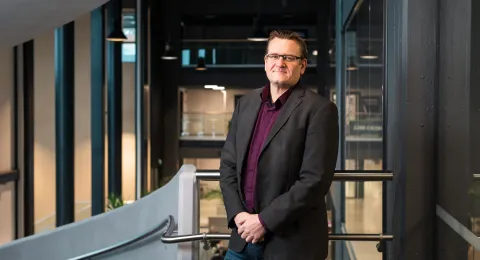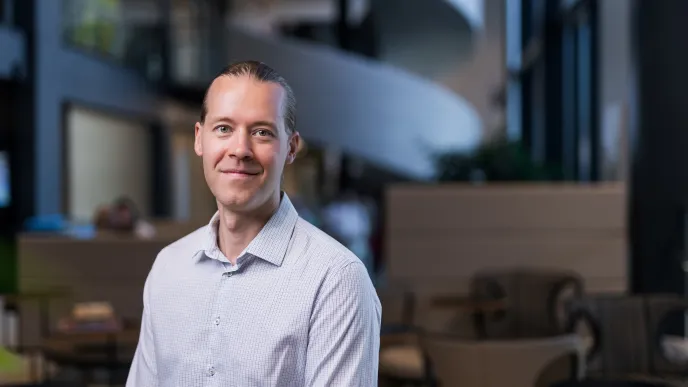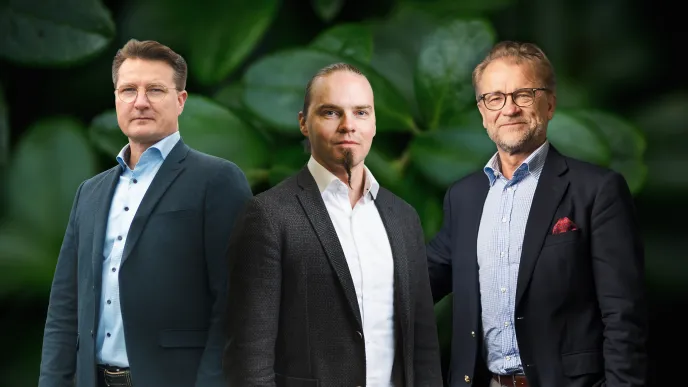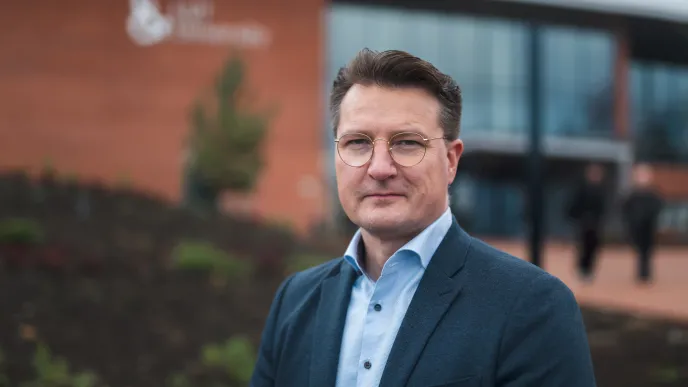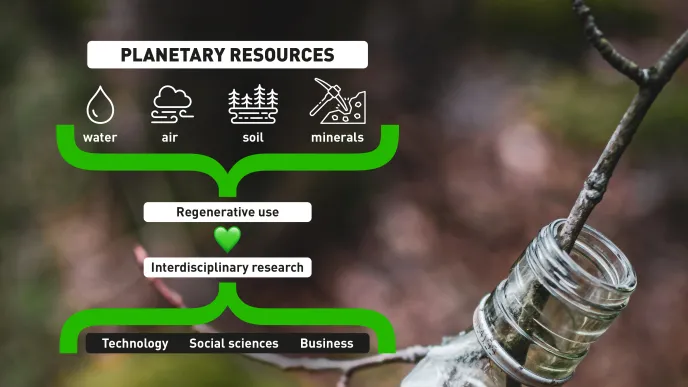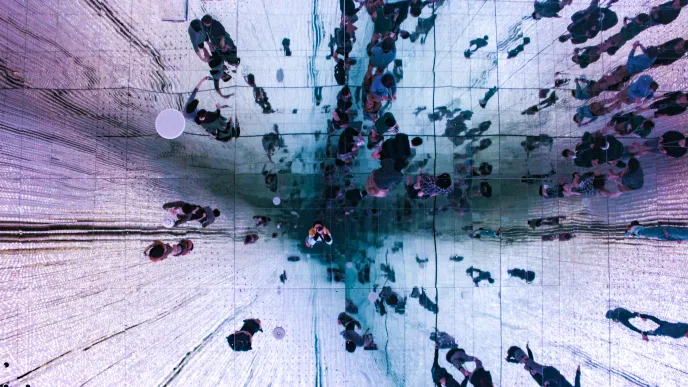The Professor of Solar Economy Christian Breyer from LUT’s School of Energy Systems was named as one of the Highly Cited Researchers in 2022. Professor Breyer and his team try to solve the greatest challenges we face today: the challenge of supplying sustainable energy for all needs.
1. Congratulations for being one of the Highly Cited Researchers in 2022. What do you think is the secret of your success?
First off, I want to say thanks for the flowers. In my team, we try to offer solutions for one of the core challenges facing civilisation: establishing a sustainable energy system to overcome the present, destructive one. Good luck helps, in combination with a passionate and unique team, academic freedom, administrative support, a supportive network, and aiming for high quality with endurance.
2. What do you do at LUT?
In my Solar Economy team, we research transition pathways for a sustainable energy system that respects the limits of our beautiful planet, the Sustainable Development Goals of the United Nations, and the ambitious climate targets of the Paris Agreement.
We have developed the LUT Energy System Transition Model, tools for the Power-to-X Economy, and further methods that allow us to investigate how to transition from the present dysfunctional energy system to one with a high level of sustainability for power, heat, transport, industry, desalination, and CO2 removal.
Our goal is that the methods scale from a local to global perspective. We’ve found that most solutions can be based on low-cost and sustainable electricity, either directly or indirectly.
3. When it comes to science, why do you think international cooperation is important?
Modern science is teamwork in a competitive environment. Joining forces with research partners is for the best benefit of all partners involved. Combining strengths can enable reaching a new level none of the involved partners could achieve alone.
European projects essentially build on common research visions on capabilities to reach the set objectives. We can all benefit from different approaches, while discovering new research networks. Joint published perspectives on disputed topics or next research steps in a field are more impactful in a group of leading researchers.
4. What are the things you enjoy most about your job?
A routine 8-to-4 job was the first career I left as a young man. At that time, I decided to gain motivation from work with purpose. My working environment is in my great and passionate team, colleagues, research partners and allies, a diverse environment of stakeholders, and students with a fresh perspective. We regularly have the privilege to discover entirely new fields.
As an example, just recently we got a paper accepted in an excellent journal, in which we describe a power-to-forests approach for arid regions – greening the deserts – as a means of reducing atmospheric CO2 in as natural and safe way as possible, with acceptable costs and without any major land-use issues on a large scale.
The idea was born at a conference in Iran some years ago, while exploring an arid region in a country where entire rivers have disappeared. We built on our existing desalination knowledge on power-to-water and had to learn how trees grow. The next step would be to better understand the benefits for communities, countries, and biodiversity.
5. What would you like to change at the university?
Universities in general should again become a place of freedom for creating knowledge, education, and great ideas.
Nowadays, we hunt for budgets, waste time in writing proposals that have a 5% success rate, and get default rejections if no companies are involved in public applied research. We call that competition. In reality, it is wasting the resources of the most highly educated individuals, who could create more value for society.
6. How did you end up leading an academic career?
My employer in industry went bankrupt due to lack of political leadership for a sustainable society. My original plan was to carry out similar activities as I do now – in science – but at a leading global industrial company. The structural change that society needs requires massive means, to rebuild an energy economy that’s based on convincing ideas for a better future. Companies are stakeholders that will finally build a new world.
When that path collapsed, I decided to concentrate on ideas for a renewal, investigating pathways for a sustainable energy future that may be built by diverse players, from citizens and NGOs, to small and medium-sized companies, and global giants, framed by an empowering policy framework. Science is a wonderful field, with the freedom to imagine a future worth aiming for, and to find ways to reach that future based on hard facts, robust methods, and reproducible results.
7. What is your greatest career accomplishment so far?
Having a diverse team that shares a common vision for a sustainable energy future. It is less a single achievement but more creating about new pieces of a puzzle that are combined into a wonderful mosaic of something new, overcoming old views and opening the minds of others to discover new opportunities.
In concrete terms, practical and conceptional impact can induce change. In that regard, it was thrilling to follow a speech from the founder and president of the world’s largest solar photovoltaics manufacturer a few years back, explaining on an investors conference that they will massively expand their production capacities in the years to come. He referred explicitly to a study published by my team, in which we showed, on robust techno-economic basis, that the world market will be several factors larger than anticipated before.
Today, this highly profitable company produces three times more solar photovoltaics capacity than the entire world market had been producing ten years ago, and they just announced plans to double their capacity within next two years. A major conceptional impact was the recent 6th Assessment Report of the Working Group III of the IPCC, in which my team received citations for more than 30 different research articles.
8. Who or what inspires you most?
The beauty of nature on our wonderful planet, and the diversity of cultures all around the world, created by the positive side of humans.
9. What would you like to study if anything was possible?
In a parallel universe, it may be interesting to study psychology and sociology to better understand the ambiguity of the bright and dark side of humans.
Since I prefer the positive and constructive topics, I may opt for novel materials sciences, as almost all technical challenges trace back to limitations in materials, and overcoming such limitations enables new solutions not accessible before.
10. How do you balance your work and personal life?
Something I could do better.
In my limited time I try to rediscover the world with my family. We visit great places of nature, life, and culture, in person or in our minds. This can be enjoying Lake Saimaa, camping on a nearby island at Midsummer, discovering the arctic nature, walking in forests, diving in coral reefs, hiking in mountains, experiencing deserts, skiing, or exploring ancient sites.
Discovering different views and mindsets can be quite relaxing, such as the Star Trek universe or playing board games.
11. Tell us something about yourself that others may not know.
Almost ten years ago I was hired as professor at LUT with a journals-based h-index of 1. Obviously, it was different times. Working in industry publications happened at conferences, less in journals. I am grateful for the courageous leaders at our LUT School of Energy Systems, who enabled the progress of recent years. It has been an amazing journey to discover the world of journals up to the highest levels.

